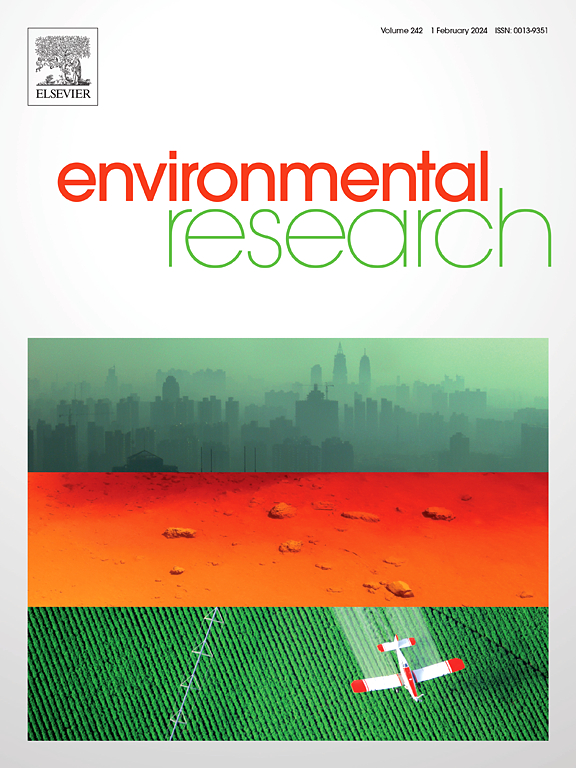Long-term removal characterization of trichloroethylene from groundwater using sustained-release iron-carbon composite: Investigations through batch and column experiments
IF 7.7
2区 环境科学与生态学
Q1 ENVIRONMENTAL SCIENCES
引用次数: 0
Abstract
Nano-zero-valent iron (nZVI) is commonly used as a reactive material for trichloro-ethylene (TCE) remediation in groundwater systems, and the long-term removal capacity serves as a critical indicator for evaluating the material efficacy. In this study, a novel sustained-release iron-carbon composite (BC@nZVI-βCD) was synthesized by the integration of biochar (BC) matrix and β-cyclodextrin (βCD) encapsulation, and the materials before and after modification were analyzed by various characterization methods. Subsequently, the kinetics of TCE removal by different materials were investigated, and the sustained-release properties of BC@nZVI-βCD were explored by batch and column experiments. Finally, the long-term TCE removal mechanism was discussed carefully. The results showed that the incorporation of BC increased the specific surface area and dispersion of nZVI, while βCD successfully encapsulated nZVI and formed abundant nanocracks on the surface. The removal of TCE by BC@nZVI-βCD was in accordance with the pseudo-second-order kinetic equation, and the removal rate of TCE was as high as 97 % within 3 h, and 92.7 % of TCE was degraded within 14 d. Moreover, BC@nZVI-βCD maintained a stable removal efficiency of TCE in long-term sand column experiments, with the removal rate remaining above 94 % for the first 32 d, and the removal rate also reached 78.6 % by 86 d. In conclusion, the synergistic effect of both BC and βCD breaks through the limitation of pure nZVI, improves the sustained-release performance of the BC@nZVI-βCD composite and the degradation effect of TCE, which can have great application prospects on the long-term remediation of TCE contaminated sites.

缓释铁碳复合材料对地下水中三氯乙烯的长期去除特性:通过间歇和柱式实验的研究
纳米零价铁(nZVI)是地下水系统中常用的三氯乙烯(TCE)修复活性材料,其长期去除能力是评价材料效果的重要指标。本研究将生物炭(BC)基质与β-环糊精(βCD)包封相结合,合成了一种新型的铁碳缓释复合材料(BC@nZVI-βCD),并通过各种表征方法对改性前后的材料进行了分析。随后,研究了不同材料对TCE的去除动力学,并通过批和柱实验探讨了BC@nZVI-βCD的缓释特性。最后,详细讨论了TCE的长期去除机制。结果表明,BC的掺入增加了nZVI的比表面积和分散性,而βCD则成功包裹了nZVI,并在表面形成了丰富的纳米裂纹。移除TCE BC@nZVI -βCD是依照pseudo-second-order动力学方程,和TCE的去除率高达97%在3 h,和92.7%的TCE降解在14 d。此外,BC@nZVI -βCD保持一个稳定的去除效率TCE长期砂柱实验,先用剩下的去除率94%以上32 d,去除率也在86年达到78.6% d。总之,BC和βCD的协同作用突破了单纯nZVI的限制,提高了BC@nZVI-βCD复合物的缓释性能和TCE的降解效果,在TCE污染场地的长期修复中具有很大的应用前景。
本文章由计算机程序翻译,如有差异,请以英文原文为准。
求助全文
约1分钟内获得全文
求助全文
来源期刊

Environmental Research
环境科学-公共卫生、环境卫生与职业卫生
CiteScore
12.60
自引率
8.40%
发文量
2480
审稿时长
4.7 months
期刊介绍:
The Environmental Research journal presents a broad range of interdisciplinary research, focused on addressing worldwide environmental concerns and featuring innovative findings. Our publication strives to explore relevant anthropogenic issues across various environmental sectors, showcasing practical applications in real-life settings.
 求助内容:
求助内容: 应助结果提醒方式:
应助结果提醒方式:


